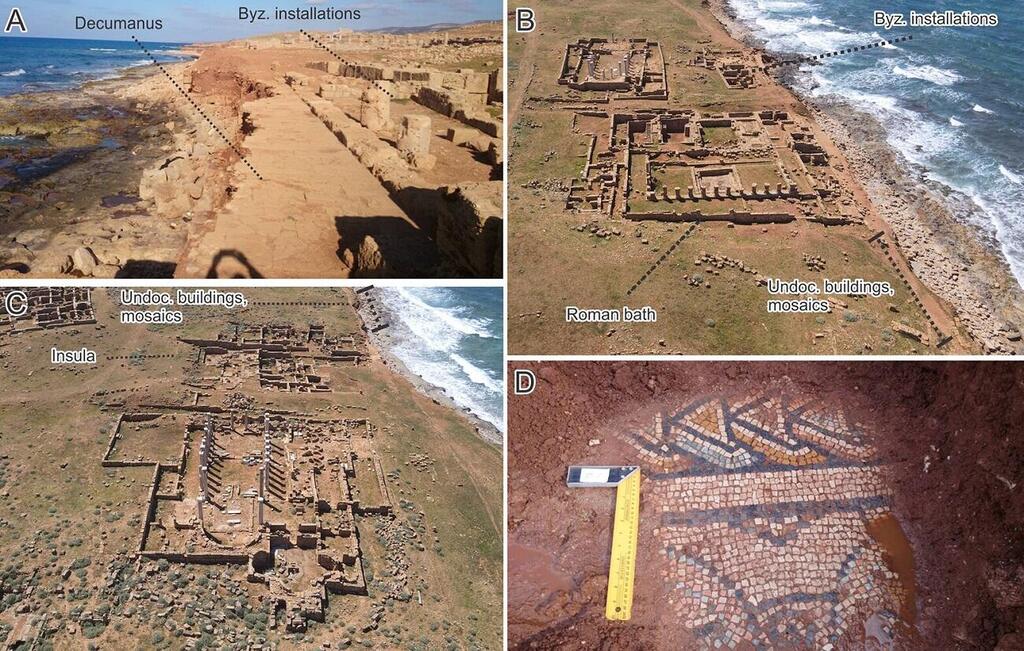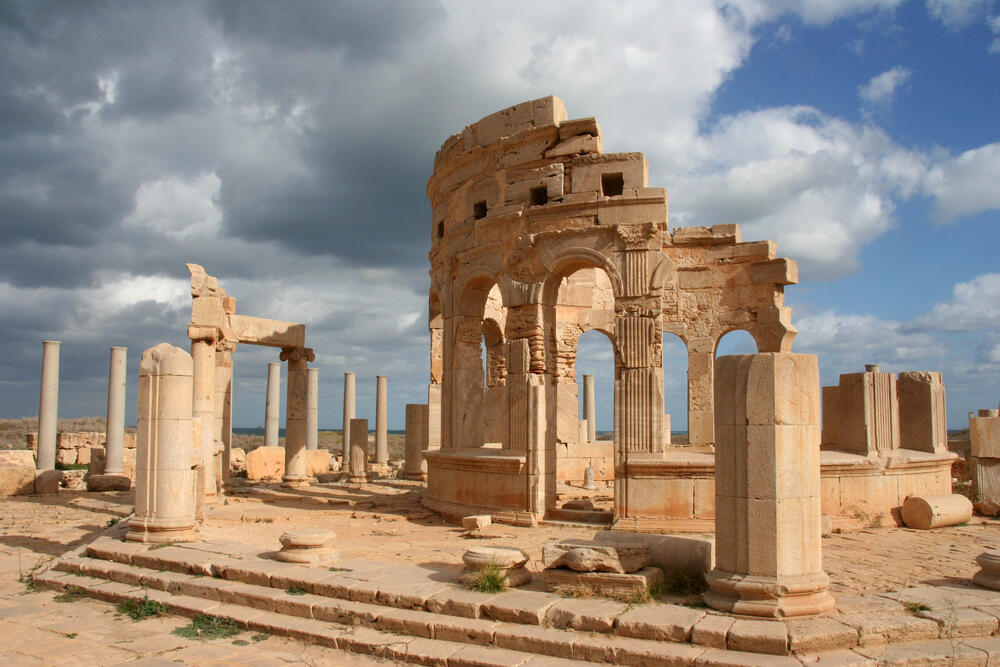Numerous important archaeological sites along Libya's coast are in danger of damage or even being wiped out due to worsening coastal erosion which experts warn could be exacerbated in the future owing to rising sea levels brought about by climate change.
Related stories:
A real-life example of this can be seen in the erosion of the coast in Kyrnikeh, located in the eastern part of the country, which presents one of many examples of a major problem for the world of archaeology and heritage site management.
The Kyrnikeh coast in eastern Libya, stretching from the Sidera Bay in the north of the country to the Egypt-Libya border, has a long history of human presence dating back to the Paleolithic era.
As a result, there are numerous important archaeological landmarks scattered about its territory, some of which have not been fully explored or documented. Additionally, it is home to several well-preserved ancient Greek and Roman cities, temples, and tombs that have been preserved for hundreds and hundreds of years.
However, parts of this historical coastline are fast eroded by the elements, which threatens to gradually gnaw at and eventually submerge these important sites over the next two decades.
The dangers coastline erosion poses to other areas along Libya's coastline have already been mapped out in detail, but the same cannot be said for the Kyrnaki coast in the country's east, also known as Pantopolis in ancient times and one of the main battlegrounds the North African nation's bloody civil war.
This study, published in the PloS One journal and conducted by Dr. Kieran Westley and Dr. Julia Nikolaus from Ulster University in Britain, combined historical and modern documentation of the Karnakai coastline using aerial photographs, satellite images, and field observations to assess patterns of coastal erosion near these important archaeological sites.
Coastal erosion is a natural process that occurs gradually when waves, tides and currents come crashing on the shoreline, biting off small bits and pieces with each lash.
For instance, researchers identified extensive erosion along the coastline at a site near the port of Apollonia which served as a major hub of science and philosophy in the ancient world. This process has only accelerated in recent years, likely due to human activities such as sand mining and deforestation.
One of the most significant landmarks at risk is the ancient city of Cyrene, founded by the Greeks in the 7th century BCE. The city was a central hub of trade and culture in the ancient world, and its ruins are now a UNESCO World Heritage Site. However, the city is perched atop a hill overlooking the Mediterranean Sea, and coastal erosion threatens its foundations. The
The ancient Roman city of Leptis Magna is another UNESCO World Heritage Site at risk of getting devoured by the waves.
The authors of the study stress the need for immediate action aimed at protecting these historical treasures, as well as raising awareness of the factors that exacerbate coastal erosion.
According to data, it is necessary to continue researching other historical sites along the country's coastline and the Mediterranean Sea to try and assess the level of risk these sites are facing, and to increase awareness of the adverse effects of human activities on them.
"The impact of coastal erosion in Libya is significant and may worsen in the future. Our research emphasizes the critical need to reduce the damage caused to these heritage sites that are in danger of disappearing, as there is no substitute for them if they are completely lost," said the researchers.
Building seawalls and other supporting structures to buttress the historical sites was one of several courses of action floated to protect them from coastal erosion, as well as relocating them to higher places or farther away from the coastline.
However, these efforts are expensive and time-consuming and pose the risk that some landmarks will be damaged in the process. "It is important that we take quick action to protect these important cultural treasures for future generations," the researchers added.





